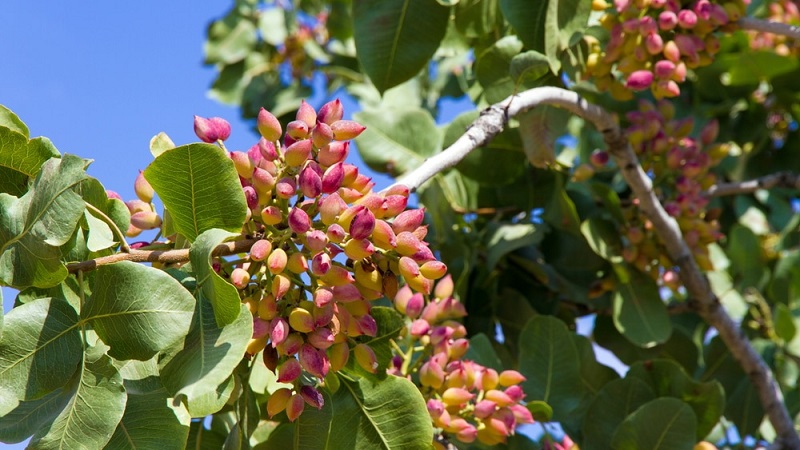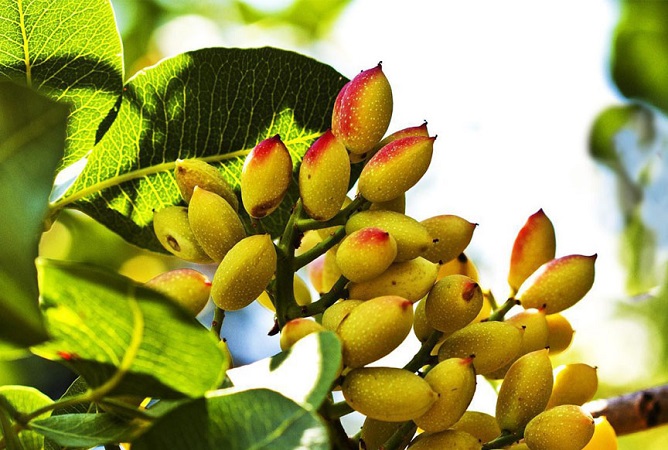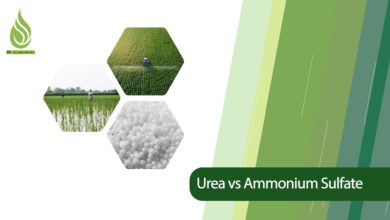
Nutrients and Key Factors Contribute to the Fullness of Pistachios
Pistachios are one of the most popular and nutritious nuts in the world. They are loved for their delicious taste and amazing health benefits, making them a staple in many people’s diets. The quality of pistachios depends on several factors. Farmers need to pay attention to the nutrients and key elements that help make pistachios plump and flavorful. In this article, we will examine the factors that contribute to the fullness of pistachio nuts, with a focus on maximizing pistachio yield. Understanding these factors will help improve the performance of pistachio orchards and enhance the quality of the final product.
Why is the Fullness of Pistachios Important?
Pistachios are an export product, and their quality is very important for both local and international consumers. They are not only delicious and nutritious nuts but are also popular in cooking and baking, and are known as a healthy snack. Pistachios are packed with essential nutrients that are vital for our health. They are a rich source of protein, healthy fats, vitamins, and minerals like potassium, iron, and calcium. Because of these properties, pistachios can help improve heart health, manage weight, and support the immune system, contributing to the overall fullness of pistachios as a valuable food source.
During the harvest season, farmers hope to collect plump and naturally open pistachios. “naturally open pistachios” or “smiling pistachios” refer to those whose shells have naturally split open during growth, revealing the nut inside. This happens due to internal pressure while the pistachio is developing, causing the outer shell to crack slightly and appear “open.”
Plump and open pistachios have an attractive appearance and great taste and texture. The fullness and openness of the pistachio indicate healthy growth and proper farming and care conditions. This type of pistachio is very popular due to its appealing look and high quality, making it valuable in both domestic and international markets.
What are the Reasons for the Fullness of Pistachios?
The fullness or lack of fullness in pistachios or pistachio nuts is not due to just one factor. To have a pistachio tree that produces large, plump nuts, several factors need to be considered from the time the seeds or seedlings are planted.
Pistachio production relies on pollination, which means we need both male and female trees for proper nut development. Typically, for every 10 to 15 female trees, one male tree is planted to ensure effective pollination. Usually, there is no nut production for the first five years after planting a pistachio seedling. In the early years of growth, the tree produces very little, but over time, its productivity improves. Providing proper care and nutrition to pistachio trees during their growth stages helps maximizing their yield in the following years.

The lack of fullness in pistachios is influenced by environmental, nutritional, and management factors. Here are the main reasons why pistachios may not be full:
- Nutrient Deficiency: Pistachio trees need specific nutrients to grow and develop. A lack of these nutrients can lead to lower fruit quality and reduced tree productivity.
- Unfavorable Weather Conditions: Improper temperatures, frost, and strong winds can negatively affect pistachio growth.
- Improper Irrigation: Either insufficient water or overwatering can impact the quality of the pistachio nuts.
- Pests and Diseases: Pests like fruit worms and fungal diseases can damage the fruit.
- Environmental Stress: Issues like humidity, light stress, and poor soil conditions can adversely affect pistachio nut growth. Excessive heat can reduce metabolic activity in the trees. In Iran, temperatures above 35 to 40 degrees Celsius can negatively impact nut fullness.
- Age of the Trees: Pistachio trees typically reach maturity about 10 to 13 years after planting. Younger trees usually produce smaller and weaker nuts.
- Poor Orchard Management: Inadequate management in pruning, fertilizing, and watering trees can prevent proper fruit and nut development.
- Tree Variety: Some pistachio varieties naturally produce larger and fuller nuts, while others may have weaker nuts due to their genetic traits.
- Pollination Issues: Poor pollination and inadequate fertilization can lead to empty or weak pistachio nuts. For high-quality fruit, effective pollination in the pistachio orchard is essential.
The lack of fullness in pistachio nuts can be the result of a combination of these factors. To improve the quality and fullness of the nuts, all aspects need to be considered.
Effective Strategies for Growing Perfect Pistachios and Achieving Nut Fullness
To grow plump and marketable pistachios, several factors need to be taken into account. Following good management practices in pistachio orchards will help increase productivity and maximize pistachio yield, ensuring that you harvest high-quality, open nuts that contribute to the overall fullness of pistachios.

Next, we will explain the most important strategies for producing plump pistachios.
Providing Nutrients
Using balanced fertilizers that meet the soil’s needs helps the pistachio nuts grow better. To identify nutrient deficiencies and create a fertilization plan based on the plant’s needs, soil testing should be done. Essential nutrients for plump pistachios include nitrogen, potassium, calcium, and micronutrients like iron, zinc, and manganese.
Adjusting Soil pH
Pistachio trees can grow in various types of soil, but they perform best in light, sandy, and loamy soils with good drainage. Heavy soils are not ideal for growing pistachio trees. While pistachios are resistant to salinity, excessively high pH levels can harm the trees. The suitable pH for growing pistachios is between 7 and 7.5. If the pH is higher, it can be lowered using sulfur fertilizers. Having no hard layers or impermeable rocks is crucial for cultivating pistachio trees.
Choosing the Right Varieties
Selecting pistachio varieties that naturally produce larger and fuller nuts can significantly impact the quality of the harvest.
Considering Plant Density
Proper spacing when planting pistachio seedlings is essential for producing high-quality fruit. If the spacing is incorrect, trees will compete for water and nutrients, reducing their productivity. Additionally, insufficient spacing can hinder light exposure and air circulation.
Water Management
Although pistachio trees are well-suited for dry farming and require less water compared to some other trees, timely irrigation is important. During the nut-filling period in summer or during flowering in April, trees need more water. Poor irrigation during these times can prevent the nuts from filling out properly. However, it is essential not to overwater, as waterlogging can harm the roots. The recommended watering schedule is every 30-40 days in spring and fall, and every 25 days in summer.
Favorable Environmental Conditions
Pistachio trees need moderate temperatures for optimal productivity. Preventing frost during critical growth stages can improve nut quality. Using appropriate coverings against wind and sun can help reduce environmental stress. Good environmental conditions are crucial, so if your area isn’t suitable for growing pistachios, high yields shouldn’t be expected.
Pest and Disease Control
Timely identification of pests and diseases that can harm pistachio trees is essential. If necessary, approved pesticides should be used to protect the trees.
Proper and Timely Pruning
Annual pruning helps improve light exposure and air circulation in the trees. Pruning can be done two to three times a year, depending on the tree’s needs. Pruning pistachio trees aims to thicken main branches, improve nut production, enhance air circulation, allow better sunlight penetration, maintain nutrient balance, and remove some reproductive and vegetative buds.
Key Nutrients for Fullness of Pistachios
Like all trees, pistachio trees need various nutrients to grow. These nutrients are classified into macronutrients (needed in larger amounts) and micronutrients (needed in smaller amounts). The most important nutrients for producing plump pistachios include:
- Nitrogen: Nitrogen is one of the best fertilizers for fruit trees. Pistachios need a rich source of nitrogen for the growth and development of the nuts. Therefore, fertilizers high in nitrogen can significantly help pistachio growth.
- Potassium: Potassium is crucial for the growth and development of pistachio nuts. Using potassium-rich fertilizers helps create the best conditions for the nuts to grow. It also improves the flavor of the pistachios.
- Phosphorus: Phosphorus is important for developing the root system. Fertilizers containing phosphorus can aid in the growth and development of pistachio nuts.
- Sulfur: Sulfur is essential for plant growth as it plays a role in metabolic processes, protein production, and chlorophyll formation. Sulfur is important for improving the quality of pistachio nuts and helps the trees resist environmental stress, leading to fuller and tastier nuts.
- Magnesium: Magnesium is key in the photosynthesis process and helps produce chlorophyll. It also improves the quality and size of pistachio nuts and increases the tree’s resilience to environmental stresses.
- Calcium: Calcium is vital for strengthening cell walls and helps the healthy growth and development of pistachio nuts. It also prevents issues like hollow or cracked nuts, enhancing their quality.
- Micronutrients: Some micronutrients, such as copper, manganese, and iron, enhance the nutrient content in the soil and support the growth of pistachio nuts. Proper and timely use of manganese can reduce the percentage of hollow nuts. Boron also significantly affects the number of nuts in clusters and their fullness.
To fertilize effectively, it’s essential to understand the needs of the soil. This can be done by conducting soil and leaf tests to identify any deficiencies. Based on the tree’s and soil’s requirements, a fertilization plan can then be created to meet the needs of the pistachio trees.

Timing for Fertilizing for Fullness of Pistachios
Proper timing for using fertilizers is crucial for producing plump pistachios. By considering the growth stages and applying fertilizers at the right times, you can help improve the size of the pistachios. Here are the key times for using each type of fertilizer:
- Before the Growing Season (Late Winter to Early Spring):
Before the growing season begins, you can use fertilizers that contain micronutrients, nitrogen, and potassium. These fertilizers help stimulate the growth of buds and leaves and increase the buds’ resistance to dropping. - During Flowering (Mid-Spring):
Using fertilizers that contain phosphorus during the flowering stage helps improve flower quality and increase the number of fruits. - After Flower Drop (Early Summer when Fruits Begin to Form):
When the fruits start to form, you can use fertilizers containing nitrogen, potassium, calcium, iron, manganese, copper, and zinc (depending on the tree’s needs). These fertilizers support fruit growth and help the pistachio nuts fill out. - Fruit Growth Stage (Mid-Summer):
At this stage, using calcium fertilizers and those containing micronutrients like zinc and boron can help improve the quality and size of the pistachio nuts. - Before Harvest (Late Summer):
The final fertilization should take place in late summer, just before harvest. At this time, potassium and boron fertilizers can be used to enhance the quality and flavor of the pistachio nuts. Potassium helps strengthen the cell walls and increases the fruit’s resistance. - After Harvest (Winter Fertilization):
Winter fertilization is usually done with organic fertilizers and through a method called “Drill-Hole.” Organic fertilizers help balance the soil and increase the trees’ resistance to cold. Sometimes, farmers mix micronutrients like copper, iron, zinc, and manganese with organic materials to fertilize the trees. Calcium and phosphorus can also be combined with organic fertilizers for winter fertilization if needed.
At the End
Using the right amount of fertilizer and timing it correctly helps improve the quality and size of pistachio nuts, contributing to maximizing pistachio yield and enhancing the fullness of pistachios. Soil testing can identify which nutrients are lacking in the soil. The amount of fertilizer needed for pistachio trees depends on several factors, including the tree’s age, soil type, growth stage, fertilization method, and the tree’s nutritional needs. To decide on the types of fertilizers, when to use them, and how much to apply, you should have enough experience. For this purpose, it’s a good idea to consult with an experienced farmer or agricultural experts.
